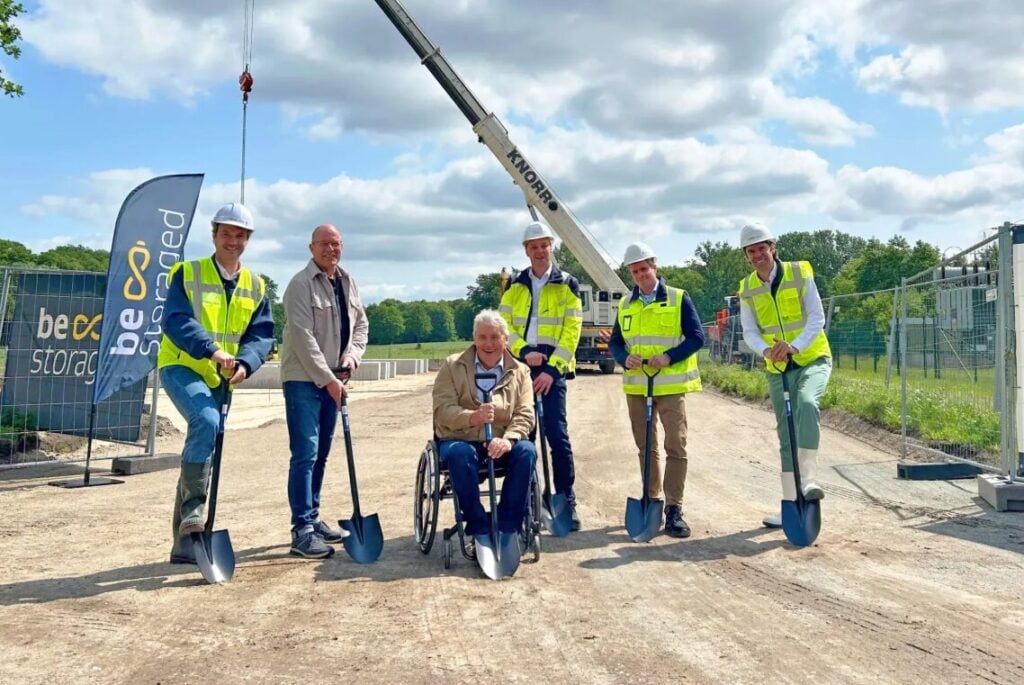
We catch up with the CFO and co-founder of German BESS own-operate platform Terra One, after its €150 million (US$173 million) mezzanine financing to scale up in Europe’s hottest energy storage market.
The company, founded in 2022, develops, builds and operates grid-scale battery energy storage system (BESS) assets in Germany with longer-term pan-European goals. A few weeks ago it secured the funding from Aviva Investors, which it said will enable it to build around 3GWh, when combined with other sources of capital.
It broke ground on a 15MW/30MWh build-own-operate project in June this year, which it will optimise on a merchant basis with its in-house Terra AI platform, but does sometimes sell in-development assets, including a 310MW project to Netherlands-based S4 Energy last year.
CFO Thomas Antonioli discusses the company’s overall strategy, regulatory challenges and—perhaps the biggest talking point in Germany right now—project financing and whether to go merchant or tolling.
Enjoy 12 months of exclusive analysis
- Regular insight and analysis of the industry’s biggest developments
- In-depth interviews with the industry’s leading figures
- Annual digital subscription to the PV Tech Power journal
- Discounts on Solar Media’s portfolio of events, in-person and virtual
Software focus
“Our goal is to build a pan-European storage independent power producer (IPP), taking care of development, execution, financing and optimisation. Our founder and CEO Tony is a software developer, our head of data science is from the original Open AI team, and our VP trading used to run algo trading at one of the largest German power traders, so we have experienced people in this area,” Antonioli says.
Terra One started “before the big hype” in Germany, Antonioli says, although some would say the hype was well started by the time of its founding in 2022.
Antonioli: “We applied for lots of grid connections, which was good because getting access to grid is the bottleneck. It’s typically first come first serve but we are now in a good position. Our first one is online in a couple of weeks. Four more are ready-to-build (RTB), we’ll start to build them when we finance them, and overall we have 500WM that is RTB or will reach RTB in next six months.”
The firm is based in Berlin, with around 55 employees split equally between power trading and data science on one hand, and development and engineering on the other.
Regulatory and grid challenges in Germany
The energy market in Germany is “yearning for storage” after years of strong renewable power growth, meaning there are significant revenue opportunities, and some regulatory obstacles are being removed to help deployment, Antonioli says. Things look good for the next few years but there is some uncertainty beyond that, he explains.
“At the moment the landscape is in flux, the investment case for projects is very good, if you have the grid and the permits, at least until mid-2029, until then there is a complete exemption from grid fees. That expires in August 2029,” he says.
“There is a new framework under development by the regulator BNetzA, but this is something that puts the bigger projects into some uncertainty (as they might only be delivered after that).”
“The indication is there will be some level of grid fees, how that will impact investment case is not clear yet. Our interpretation is there is a political desire to ramp up storage, despite some conflicting messages from new government, the economic and business case is strong.
“This year we had the highest number of negative price hours, that impacts people that operate PV and wind, there is an awareness and initiatives of how to make this work.”
The other challenge for developing and building BESS in Germany is the BKZ (Baukostenzuschuss) fee, a one-time payment that grid-connected energy projects including BESS must pay to help grid operators cover the costs of grid expansion.
BESS operators argue they should not have to pay this because they are a grid asset that can help to mitigate imbalances and grid congestion, and the amount varies by local operator. Antonioli, however, is relatively sanguine on the BKZ.
“An upfront one-off charge as with the BKZ is easy to build into the business case, much easier than something that changes all the time, rather than some kind of black box, which may go up or down over time. No-one said they won’t do a project because of the BKZ.”
Grid queue
It recently emerged that there could be over 500GW of BESS projects in the grid interconnection queue, far higher than what is needed and a possible hinderance to actually getting projects get built, if less viable ones are ahead of ones that are closer to being built. This is a challenge in any mature renewables market.
“Similar to other markets, the grid is the big bottleneck. There are different initiatives to filter and manage that, both on the regulatory level as well as with individual grid operators,” Antonioli says.
“There is an attempt by different grid operators to reduce applications, reduce speculative applications, like by requiring a fairly big down payment. For example, they’ll ask for 25-50% of the BKZ to be put down in order to reserve the grid, and that is quite a big obstacle for many developers.”
“There’s an approach in some places to follow the same as with legacy plants, where you need to prove your project is serious and well-advanced, with real design, cable routes, some financing proof. All of this is required by the time you submit the connection request, which again makes it hard for small developers. These examples are around limiting the number of requests.”
That is about getting the right projects built, while another approach is about ensuring that BESS is not a hinderance to the local grid. As with other owner-operators, Antonioli says the measures brought in to mitigate this are demonstrative of operators’ unfamiliarity with energy storage as a technology.
“The second approach is about how to bring the batteries into the grid in a way that is more manageable for operators. It’s very recent that batteries have come online, and now they have still only mainly used for ancillary services, grid operators don’t yet have a good understanding of how batteries work on the grid, and they always work on a worst-case assumption,” he says.
“In their thinking they always pick the worst scenario possible, which is caused by Germany having one power price zone and wind and solar are unequally distributed, where the national power price is really low but in, say, Bavaria, you have a power shortage. The grid operator is scared that the battery will charge at the low-price moment when their local grid is already under stress.”
“We’re seeing flexible connection agreements that propose you cannot charge or discharge at certain times. But that is all still based on them still not fully understanding yet how the batteries act, so they try to introduce some sort of guardrails.”
Another BESS owner-operator, Green Flexibility, has been a big proponent of these flexible grid connection agreements, employing it for a 40MW/80MWh at which it recently broke ground.
Tolling versus merchant
A big discussion in Germany, and most other European markets, is how to commercialise and finance BESS projects. Tolls have emerged as a way to secure long-term revenues and get banks on board, but some more risk-friendly investors prefer the bigger upside potential from going ‘merchant’ and taking your chances in the energy market. Terra One is in the latter camp.
“Currently the delta between the merchant and tolling is big—in merchant mode you can get €200-250k per megawatt annually on a 2-hour system, while the toll is €130k if you get a good price. The financing community is not yet as mature as it is in the UK, banks have historically financed solar or wind, not storage,” Antonioli said.
“We have now financed four projects merchant with decent gearing. That being said, we are open to procure some sort of floor or toll if it what is needed to get the project financed.”
“You’ll typically see banks require a debt service coverage ratio (DSCR) of 1.2-1.3 for a toll while for merchant it would be 1.6-1.7. The merchant revenue is just so much higher, there are different sensitivities.”

